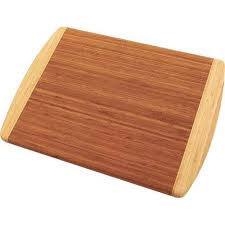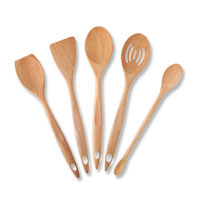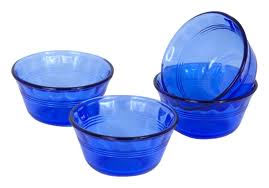Tips for a More
User-Friendly Kitchen
By Alice Osborne
 The kitchen is considered the most important room in the home by most designers and food lovers. To designers it’s the heart of the home, a natural gathering place, a training ground for future cooks, a source of nourishment and relaxation…the list goes on.
The kitchen is considered the most important room in the home by most designers and food lovers. To designers it’s the heart of the home, a natural gathering place, a training ground for future cooks, a source of nourishment and relaxation…the list goes on.
To food lovers, it’s... well, we get it. Anyway, because of this importance, and the heavy demands holiday cooking, baking, and entertaining put on it, the kitchen ought to be especially user-friendly. Consider these tips for making it so:
 START WITH A METICULOUSLY ORGANIZED REFRIGERATOR. Divide your fridge contents into two main categories and then sub-categories. The two main categories that I recommend are OFTEN USED FOODS and LESSER USED FOODS. Then within those categories, organize by food groups (protein, dairy, produce, etc.). Avoid placing items that you know you should be eating, all the way in the back of your fridge. Put some rhyme and reason into how you arrange things — grouping and storing like items together is the rule of thumb here.
START WITH A METICULOUSLY ORGANIZED REFRIGERATOR. Divide your fridge contents into two main categories and then sub-categories. The two main categories that I recommend are OFTEN USED FOODS and LESSER USED FOODS. Then within those categories, organize by food groups (protein, dairy, produce, etc.). Avoid placing items that you know you should be eating, all the way in the back of your fridge. Put some rhyme and reason into how you arrange things — grouping and storing like items together is the rule of thumb here.
 Besides placement, pay attention to how you store your items. Try to keep things visible — glass keepers serve me well—I can see what’s in them and there’s no danger of polycarbs leaching into my food (which is a concern with plastic keepers).
Besides placement, pay attention to how you store your items. Try to keep things visible — glass keepers serve me well—I can see what’s in them and there’s no danger of polycarbs leaching into my food (which is a concern with plastic keepers).
Finally, one of the best fridge - habits I ever got into was cleaning the fridge before I shop for groceries. It’s so inspiring to have shiny, beautiful spaces awaiting my freshly purchased food. Also, I don’t let science experiments happen. To ensure no food goes AWOL, I give leftovers their own shelf or section of a shelf and I plan meals around using these delectables.
 COLLECT AND USE TOP NOTCH TOOLS. In cookware I prefer stainless steel, clay pots and cast iron. And every kitchen should contain a great knife. There’s no need to spend a lot of money on a full gourmet set—one good-quality knife will more than suffice. It should be large, like a chef’s knife. One knife I’ve heard about lately that many great cooks swear by is the Kyocera ceramic chef’s knife. They say they like it because it’s light; it’s incredibly sharp; it can do the finest work and the hardest work.
COLLECT AND USE TOP NOTCH TOOLS. In cookware I prefer stainless steel, clay pots and cast iron. And every kitchen should contain a great knife. There’s no need to spend a lot of money on a full gourmet set—one good-quality knife will more than suffice. It should be large, like a chef’s knife. One knife I’ve heard about lately that many great cooks swear by is the Kyocera ceramic chef’s knife. They say they like it because it’s light; it’s incredibly sharp; it can do the finest work and the hardest work.
 When it comes to stainless steel knives, the advice is to get one that has a good balance between the blade and the handle. Go to a kitchen store where you can hold it in your hand. You’ll also want to buy a steel to go with a stainless steel or carbon knife. Experts say that every day when we cook, we should do a few hits on the steel just to keep our edge on our knife. They also say that once a month, we should take it someplace to be sharpened, although, if we don’t cook a lot, knife-sharpening may only need doing twice a year..
When it comes to stainless steel knives, the advice is to get one that has a good balance between the blade and the handle. Go to a kitchen store where you can hold it in your hand. You’ll also want to buy a steel to go with a stainless steel or carbon knife. Experts say that every day when we cook, we should do a few hits on the steel just to keep our edge on our knife. They also say that once a month, we should take it someplace to be sharpened, although, if we don’t cook a lot, knife-sharpening may only need doing twice a year..
 Great cooks also suggest acquiring a huge, thick wooden cutting board, one that won’t crack or warp and will allow plenty of room for ALL the chopping chores. Recommendations are for either straight wood or bamboo—the biggest available. I have a big bamboo board and just love it.
Great cooks also suggest acquiring a huge, thick wooden cutting board, one that won’t crack or warp and will allow plenty of room for ALL the chopping chores. Recommendations are for either straight wood or bamboo—the biggest available. I have a big bamboo board and just love it.
I personally prefer more hand gadgets over electronics. Some find them to be more primitive, but if you puree a soup in a blender or puree a soup in a food mill, you find two very different textures, and I love the texture that comes from hand-anything. This idea leads me to also suggest you loon into buying a food mill and a ricer. Food mills puree soups cleaner and smoother and with a more velvety texture than any blender that I’ve used. Ricers are nice for making pasta from scratch or any kind of pureed vegetable dish.
 When it’s blender time, I use a Vita Mix, which doubles as a fiber-preserving juicer. You’ve heard me blather about this tool before—I know it’s pricey, but as I’ve said, considering all the benefits and what a work horse this appliance it, I’d give up my car before I’d give up my Vita Mix. And then there are those that swear by their KitchenAid mixer. Finally, who can praise a good hand mixer enough?
When it’s blender time, I use a Vita Mix, which doubles as a fiber-preserving juicer. You’ve heard me blather about this tool before—I know it’s pricey, but as I’ve said, considering all the benefits and what a work horse this appliance it, I’d give up my car before I’d give up my Vita Mix. And then there are those that swear by their KitchenAid mixer. Finally, who can praise a good hand mixer enough?
 Another way to create a more user-friendly kitchen is to only keep and use beautiful wooden spoons and plastic spatulas. I’ve streamlined hundreds of kitchens across the country, and in almost every one I’ve found cracked, split, unsightly wood spoons and spatulas. Yuck. Who wants to use that junk? Beautiful items in good condition inspire and motivate!
Another way to create a more user-friendly kitchen is to only keep and use beautiful wooden spoons and plastic spatulas. I’ve streamlined hundreds of kitchens across the country, and in almost every one I’ve found cracked, split, unsightly wood spoons and spatulas. Yuck. Who wants to use that junk? Beautiful items in good condition inspire and motivate!
 Now here’s a little side-bar to the user-friendly side of kitchen set-up: How about we also make it eater-friendly? One simple way to do this is to serve food on smaller plates. Americans have gotten way out of hand with oversized dinner plates. The reality: we do want to a full plate of food, but it doesn’t need to be on a humungous 12- or 15-inch plate. Don’t overlook serving on salad plates or in small soup bowls—the food will cover the plate or fill the dish and we’ll like what we see. This little trick reduces calories because we’ll eat less (no seconds!) yet it all looks hearty and sumptuous.
Now here’s a little side-bar to the user-friendly side of kitchen set-up: How about we also make it eater-friendly? One simple way to do this is to serve food on smaller plates. Americans have gotten way out of hand with oversized dinner plates. The reality: we do want to a full plate of food, but it doesn’t need to be on a humungous 12- or 15-inch plate. Don’t overlook serving on salad plates or in small soup bowls—the food will cover the plate or fill the dish and we’ll like what we see. This little trick reduces calories because we’ll eat less (no seconds!) yet it all looks hearty and sumptuous.
 And the last tip from the eater-friendly department? Keep a variety of custard cups and ramekins on hand for measuring out calorie-conscious portions of snack foods. Custard cups are clear glass and they come in a variety of sizes—2 oz, 3 oz, and 4 oz. This way there’s no more tedious measuring involved. Count out what the serving size is, put it into a little cup, and before you even sit down to eat that treat, you put the big bag back into the cupboard. When your cup is empty, snacking is over!
And the last tip from the eater-friendly department? Keep a variety of custard cups and ramekins on hand for measuring out calorie-conscious portions of snack foods. Custard cups are clear glass and they come in a variety of sizes—2 oz, 3 oz, and 4 oz. This way there’s no more tedious measuring involved. Count out what the serving size is, put it into a little cup, and before you even sit down to eat that treat, you put the big bag back into the cupboard. When your cup is empty, snacking is over!

Contribute to the Cook'n Club!
DVO would love to publish your article, prose, photography and art as well as your cooking, kitchen and nutrition tips, tricks and secrets. Visit the Newsletter Submission / Win Win for All section in our Forum for more information and details.
